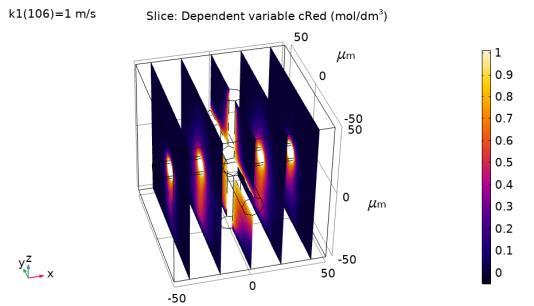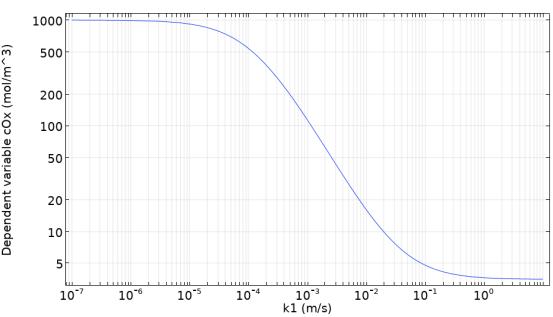
2 minute read
2.5 Quantifying the Impact of Convective Flow and Microstructure Inside Porous Electrodes on Electrochemical Performance of Flow Batteries
2.5
Quantifying the Impact of Convective Flow and Microstructure Inside Porous Electrodes on Electrochemical Performance of Flow Batteries
Advertisement
Rapid transitioning to renewable energy resources carries an urgent need for large-scale energy storage. At present, renewable energy shares cannot exceed a certain threshold for the grid to remain stable. A novel, forthcoming technology for balancing electric power demand and supply by means of reversible electrochemical reactors called flow batteries is currently studied. Understanding of the impact of macroscopic electrolyte flow in porous electrodes on the rate of reactant conversion paves the way to improved electrode microstructure design. The study is a part of the FlowCamp project [1] (a research and training project funded by the European Union’s Maria Skłodowska-Curie program) and the SONAR project [2].
Contributors: Partner(s): Funding: Duration: J. K. Włodarczyk, G. Mourouga, R. P. Schärer, J. Schumacher Fraunhofer ICT (Germany), LRSC Amiens (France), among others The European Union, Horizon 2020, Maria Skłodowska-Curie Actions 2018–2021
Porous electrodes are widely used in applications such as electrochemical sensors, electroorganic synthesis, or electric power generation. Highly developed surfaces promote an increased current output from a condensed, compact and stackable electrode. The complexity of the porous electrode internal structure poses numerous problems from the theoretical perspective. While the theory of regular flat electrodes is well established, the interplay of uneven surface effects, disturbed transport processes in inhomogeneous media, and superimposed electrolyte flow inside porous electrodes complicates their mathematical analysis. Understanding the impact of convective flow inside the pores on electrochemical performance of porous electrodes is critical for improved design and optimization of operating conditions. In the FlowCamp and Sonar projects, the aforementioned issues are addressed in a systematic study by means of numerical models on par with experimental model validation. In the first phase of the investigation, a simple 3D pore-fibre geometry was constructed in micrometre-scale (Figure 1) consisting of 3 crossing fibres, whose geometric area can be precisely calculated. Next, a macroscopic electrolyte flow was superimposed in the cell by solving the Stokes equation. On the very surface of the conductive fibres, a reaction term was defined as a boundary condition. It emulates a simple reduction reaction, Ox → Red, at given rate defined by a firstorder rate law. The conversion rate is determined by a reaction constant k1. The result of the simulation, showing product concentration distribution, is depicted in Figure 1. The rate constant can be easily varied to study the average surface concentration of the reactant (Ox), which is shown in Figure 2. Later on, the reaction term will be fitted with electron transfer to simulate electrochemical charge transfer (Ox + e- → Red). By varying the periodic cell geometry, inhomogeneity can be artificially introduced and its impact on the electrode performance can be quantified.
Figure 1. Distribution of reaction product (reduced species) in the pore voids in the simplified pore geometry model.

Figure 2. Simulated oxidized species mean surface concentration as a function of heterogeneous reaction rate constant in a simplified pore geometry (average superficial inlet velocity of 1 mm/s).
[1] Project website: https://www.flowcamp-project.eu/ [2] Project website: https://www.sonar-redox.eu/







